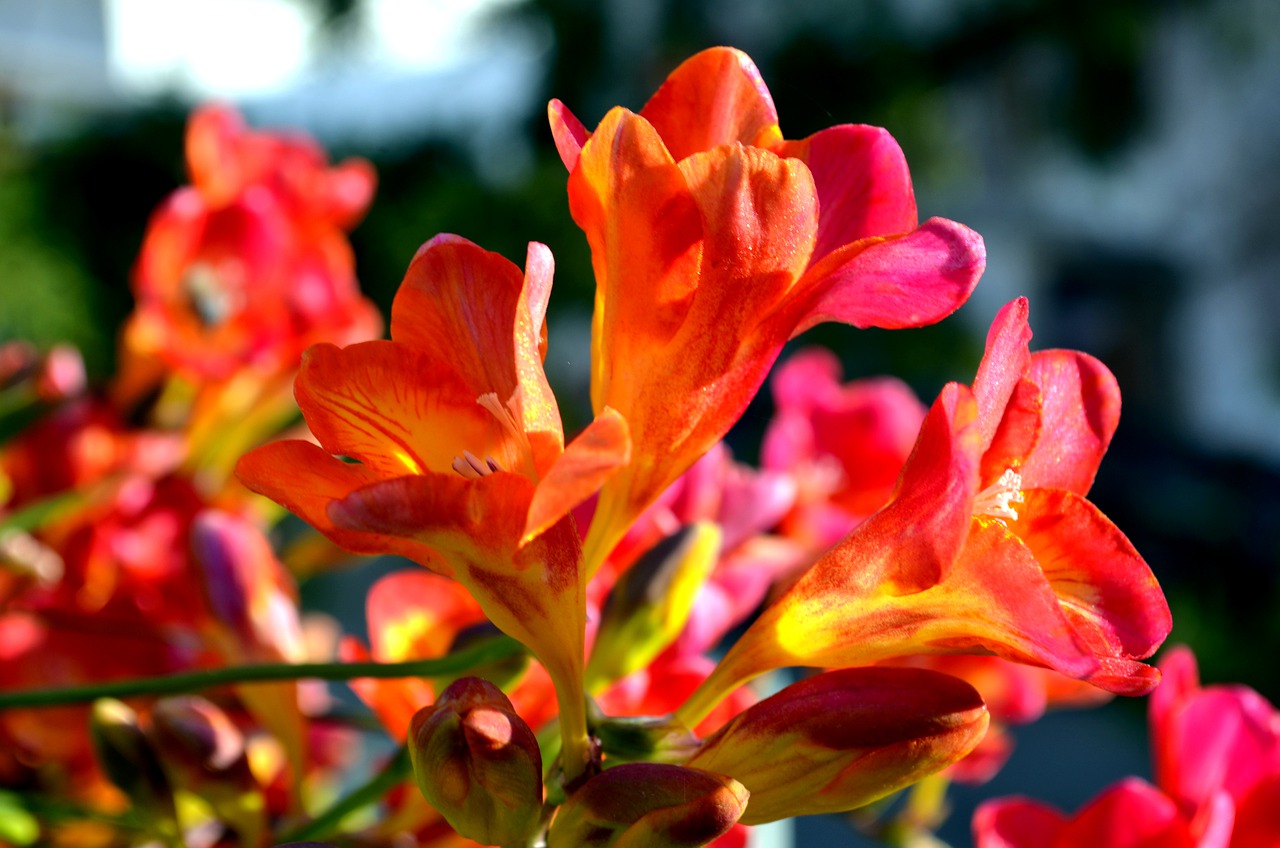Last Updated on January 11, 2022 by Real Men Sow
The exotic-looking flowers of Freesias are known for their strong, spicy-sweet scent. The flowers are funnel-shaped and are borne in dense, branching clusters along slender stems that reach 30-60 cm in height. They also have long and narrow green leaves. These flowers are extremely popular as cut flowers.
Freesias are South African and can be grown from bulb-like corms. They can also be planted outside in borders or pots. These corms can be purchased as prepared corms that have been heat-treated to flower 100-120 days after they were planted in their first year. This heat treatment replicates the conditions where freesias bloom in winter in their natural environment.

How to Grow Freesias
Indoor growing is possible by planting freesias in autumn so that they bloom in the winter. Undercover planting is recommended for freesias to be grown in indoor pots. Plant outdoors from April to June.
These flower corms can be planted in well-drained soil, potting compost, or pointy-end-up, at a depth between 3-5cm and 5cm apart. After watering, place the pot in a cool, sunny, frost-free area. When shoots begin to appear in 3-4 weeks, you can move the pot into a sunny and warmer place.
Where to Grow Freesias
Freesias thrive in warm, sunny areas. Place pots of freesias indoors on a sunny spot in a windowsill, porch, or conservatory. Freesias need to be kept at a minimum of 15°C. Higher temperatures can cause spindly growth and quickly fade flowers.
You can either grow them outdoors in pots or in the ground, as long as the soil drains well. Raised beds are great for freesias because the soil drains easily and they have a delicate, exotic scent that is easier to appreciate than if they were grown at ground level.
Steps to Plant Freesias The Right Way
Freesias can be grown indoors, outdoors, or in the ground. Freesias can’t withstand frost so they should only be planted outside in spring and early summer.
It is important to use potting compost or soil that has good drainage. Freesias can rot in soil that is too wet or heavy. Use a soil-based potting compound mixed with about a quarter to a twelfth of coarse grit for pots.
The long, straight, freesia corms should be planted pointy-end down at a depth between 3-5cm and 5cm apart.
What is The Right Time to Plant Freesias
The time it takes to plant freesias depends on whether they are for indoor or outdoor flowering. Indoor growing: Plant corms in autumn for bloom in the late winter. Plant freesias indoors from January to March, so they can flower in the early summer. Plant outdoors from April to June.
After planting, water the pot well. Then, place it in a cool, sunny, frost-free area. When shoots begin to appear in 3-4 weeks, you can move the pot into a sunny and warmer place.
Taking Care of The Flower
Once growth begins, water freesias frequently. Keep the compost moist but not too wet. When the flower buds begin to appear, you can start feeding freesias. Apply a liquid fertilizer rich in potash every 10-14 days.
Freesia flowers need to be supported in any way that will prevent them from flopping, no matter if they are growing in pots or on the ground. You can either buy ready-made supports, or you can use twiggy stick inserted into the soil.
Freesia bulbs can also be dried and stored for the next year. After flowering is finished, cut the stems off and decrease the watering. The leaves will turn yellow and eventually die. After the leaves have completely died back, remove the corms from their soil. After they have been lifted, place them in a warm area for several months to allow the corms to ripen, mimicking South African summer conditions. Keep them in a bag with paper in a frost-free area for the next year. The heat treatment effects will wear off, so you can only plant the corms that survived in spring.
Propagating Freesia Plants
You can grow freesias from seeds. In autumn or winter, you can sow them in potting compost with added dirt or perlite. However, keep in mind that it can take several years for plants that have been grown from seeds to reach the size required to be able to flower.
When the corms are lifted in autumn, small offsets and tiny corms may be removed from them. To grow larger corms, these can be planted in individual pots in spring. Flowering can take up to a year.

